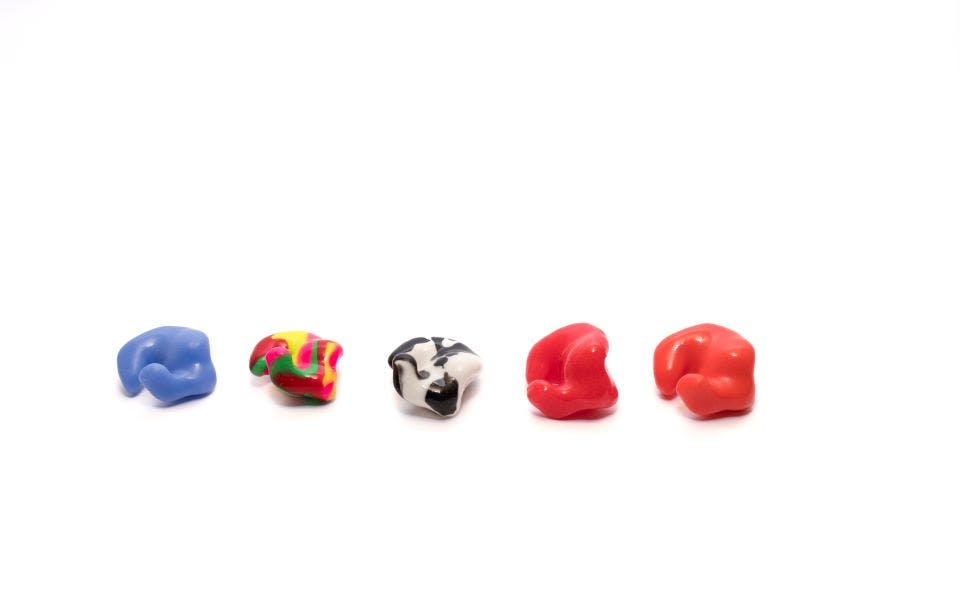Yes, and each style is suitable for various applications. Understanding earplug styles can help you determine which will protect your hearing.
Why Should I Wear Earplugs?
Noise-induced hearing loss (NIHL) can occur slowly over time or after a single exposure to loud sounds. Once the stereocilia in your inner ear are damaged, they can’t be repaired, which is why protecting your hearing is so important. Wearing earplugs reduces your risk of developing NIHL.
When Should I Wear Earplugs?
Any sound over 85 decibels may result in permanent hearing damage. Common sources of sounds exceeding that threshold include:
- Lawnmowers
- Restaurant noise
- Heavy traffic
- Motorcycles
- Leaf blowers
- Chainsaws
- Sporting events
- Concerts
- Sirens
- Gunshots
Wear earplugs on the job in noisy environments such as factories, auto shops and processing plants. The Occupational Safety and Health Administration mandates that your employer provide hearing protection if you’re exposed to sounds louder than 85 decibels over an eight-hour shift.
Earplugs should be worn at concerts, festivals and gun ranges. You can also wear them while you sleep, swim, travel and study.
Common Types of Earplugs
Disposable Foam Earplugs
Single-use foam plugs must be rolled before insertion and will conform to the shape of your ear canal. They come in various shapes and offer the highest noise reduction rating (NRR) of 33. They can be worn almost anywhere, but you’ll need additional hearing protection if you use foam earplugs at a gun range.
They could feel uncomfortable if you’re sensitive to pressure in your ear canals and shouldn’t be worn while swimming or bathing. This earplug may also block too much sound and affect communication.
Pre-Molded Earplugs
These earplugs are made from silicone, rubber or plastic and have a semi-rigid stem and flexible domes called flanges. The flanges create a water-tight seal around your ear canal and offer a 20 to 28 NRR.
Pre-molded earplugs protect your ears while swimming, flying and attending loud events. You may not be able to use pre-molded earplugs if you have unusually shaped or narrow ear canals. They are reusable but require regular cleaning.
Airplane Earplugs
If you experience airplane ear, wearing earplugs during your flight could help. This style uses a ceramic filter to regulate pressure changes in your ear canal, easing pain and discomfort during takeoff and landing. You can wear airplane earplugs throughout your flight to block ambient sound too.
Silicon Putty and Wax Earplugs
These two types of earplugs must be rolled into balls before being placed over your ear canal. Don’t put silicon putty or wax earplugs inside your ear canal because pieces could get stuck. Both styles offer an NRR of 22 to 23 and are good alternatives for foam and pre-mold earplugs if you don’t want to put anything in your ear. Silicon putty also effectively blocks water from getting inside your ear. They’re intended for single-use applications.
Musician’s Earplugs
These earplugs protect musicians’ ears but allow enough sound in for wearers to hear the beat. Musicians’ earplugs provide consistent noise reduction across all frequencies, so one sound isn’t louder than another. They have an NRR rating of 11 to 16. Some musicians’ earplugs have multiple filters that offer a higher NRR. They are reusable and come in different styles and sizes.
Custom Earplugs
Custom earplugs are created from impressions taken of your ear canal. They’re designed to fit your unique ear shape and are suitable for sleep, travel, work and other applications. They’re reusable, easy to clean and a good option if you have narrow or misshaped ear canals.
Hearing Associates offers a variety of earplugs and custom hearing protection to suit your lifestyle and preferences. Call 888-760-2032 or contact us online to schedule your appointment.


